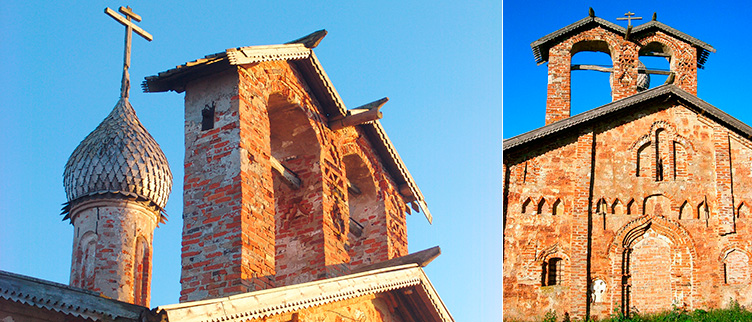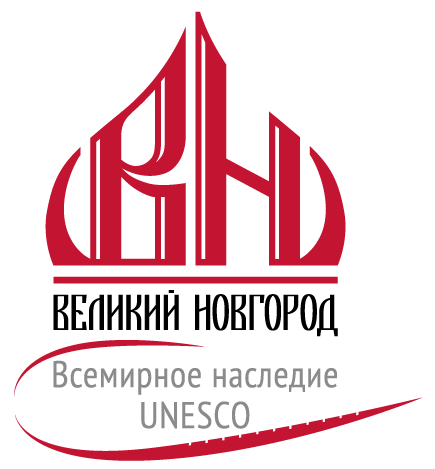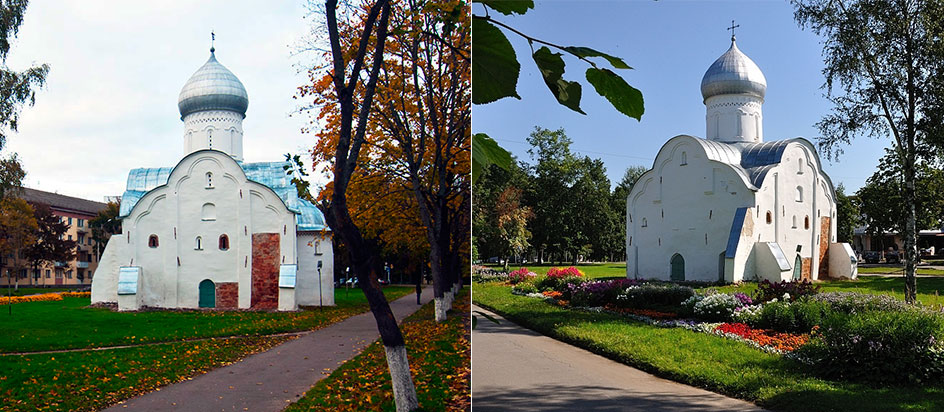
According to the archive descriptions, the wooden church of St. John the Merciful was built in 1193. The construction of stone church began in 1421 (probably 1422 - 1423) and was completed by 1672. Currently it is a small cubic building with one altar ledge.
The masonry of the 15th century is made of red shell rock with a small amount of gray limestone slab; the masonry of the 17th - 18th centuries is made of brick.
Before the final restructuring Church of St. John the Merciful had distinctive features of Novgorod architects of the early 15th century which allow to rank it among the unique monuments of local architecture. It is the earliest of the temples preserved in Veliky Novgorod with a single-pillar refectory chamber, which is also located unusually - not from the west, but from the north of the church.
During the World War II, the church was seriously damaged and by the beginning of restoration work it was in a critical condition. Thanks to restoration, the temple got back the closest to the 17th century appearance, preserving the forms of the 15th century and some later details at the same time.










.jpg)
.jpg)
.jpg)
.jpg)
.jpg)
.jpg)
.jpg)
.jpg)
.jpg)
.jpg)





